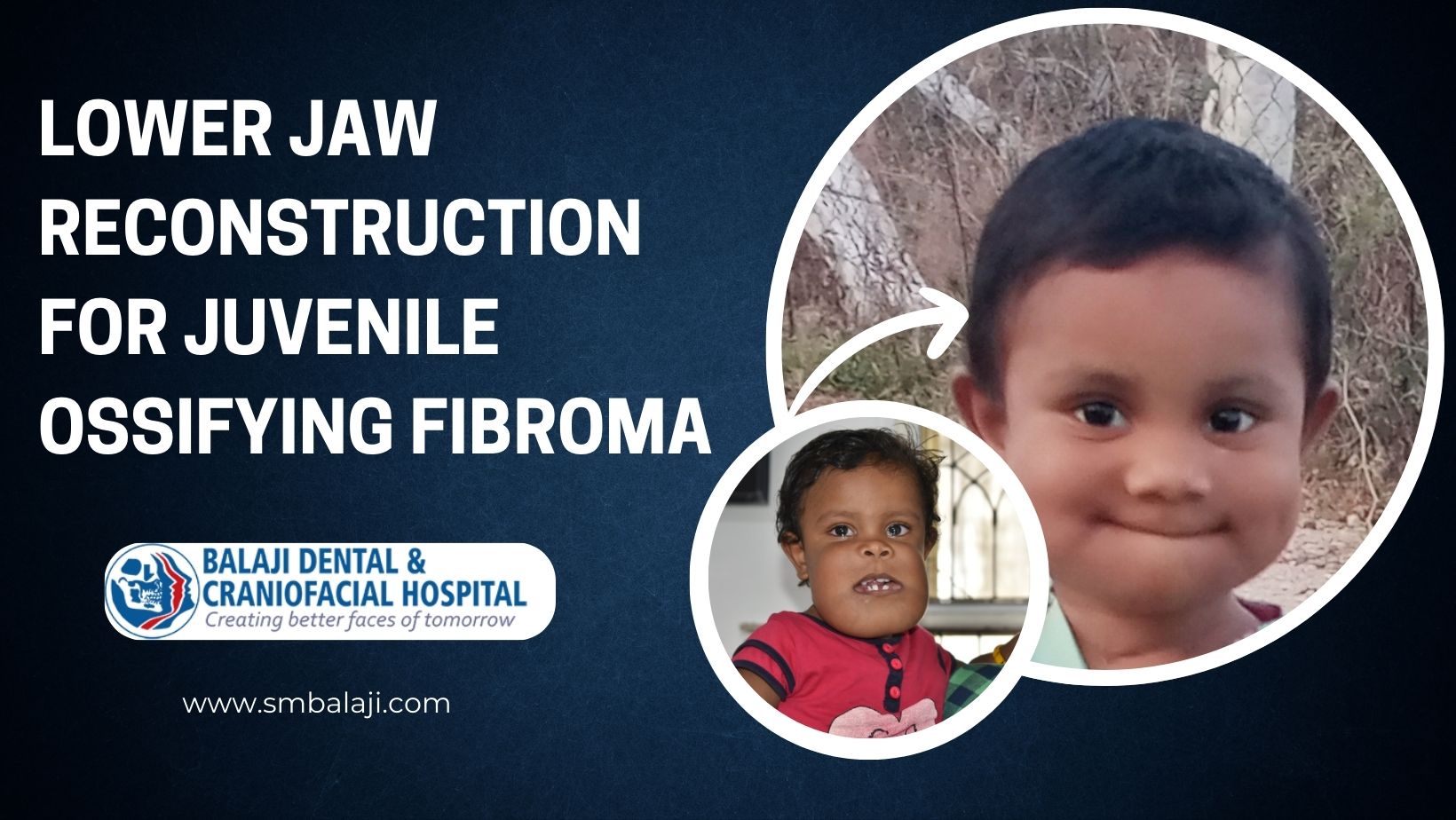Etiology and Incidence of Juvenile Ossifying Fibroma in Children
Juvenile ossifying fibroma is a benign tumor, which demonstrates aggressive expansion. It is quite uncommon and there is aggressive formation of new bone. This results in gross facial deformities of the involved bones, most commonly the jaws.
Periodontal Ligaments as the Source for Juvenile Ossifying Fibroma
The etiology of this lesion is unknown and it usually arises from the periodontal ligaments. Diagnosis is enabled both through histology and radiographic imaging studies. Imaging studies reveal it to be a radiolucent lesion, which has focal calcifications in the mass.
Radiographic and Histologic Composition of the Lesions
This lesion comprises of bony tissue, fibrous tissue and a cementum like material. Cementum is the material that lines the surface of the tooth roots. The periodontal ligaments are attached to the cementum and the bone on either end.
Involvement of the Mandible as the most Common Site for Lesion
The most common site for juvenile ossifying fibroma is the lower jaw. It also occurs in the upper jaw or the maxillary region. Many cases are asymptomatic through some patients have gross disfigurement.
Need for Jaw Reconstruction Surgery after Resection of Lesion
Some of these lesions are extremely large and require surgery. Surgical resection of these large lesions results in large bony defects. The large bony defects have to be reconstructed using bone grafts and titanium plates.
Maxillary osteotomy and mandibular osteotomy are corrective jaw surgery. Performed under general anesthesia by oral and maxillofacial surgeons, they deal with the upper and lower jaw bones. Surgical correction of open bite is obtained through such surgeries.
Orthodontic treatment is often performed in conjunction with these surgeries. The jaws and teeth are addressed as a unit during this treatment. This helps to realign the jaw as a whole. The upper teeth and lower teeth alignment is corrected through orthodontic treatment.
Tracheostomy tubes are not like ventilators or breathing machines. They are a conduit to enable normal breathing. Certain trauma cases can be life threatening and they are fitted at the front of the neck. They are an integral part of treatment planning for such cases.
Little Girl with an Extreme Presentation of Juvenile Ossifying Fibroma
This little girl is a case of juvenile ossifying fibroma of both her upper and lower jaws. Her parents had approached many international hospitals for treatment. None of the hospitals were however willing to operate on her.
Referral of Complex Pediatric Cases by WorldCF to our Hospital
Reaching the end of their tether, they had approached the US-based WorldCF. The World Craniofacial Foundation (WorldCF) is led by Mr. Kenneth Salyer Jr. They have a long standing tie up with Balaji Dental, Craniofacial Hospital & Research Institute.
Referral to our Hospital for Jaw Reconstruction Surgery
Mr. Salyer had referred her to our hospital for surgery due to our excellent track record. The patient underwent initial diagnostics including imaging studies at our hospital. Confirming the diagnosis of juvenile ossifying fibroma, the treatment plan was formulated.
Rare Honor Accorded to only the Finest in the Field
Dr. SM Balaji of Balaji Dental, Craniofacial Hospital & Research Institute is a world renowned craniofacial surgeon. He has over 30 years of experience in handling complex cases.
Our hospital is the regional affiliate for the WorldCF. A Memorandum of Understanding was signed with Prof. Kenneth E. Salyer. Prof. Salyer is one of the founding fathers of craniofacial surgery. He is also credited with the first successful separation of conjoint twins.
Treatment of Complex Syndromic Craniofacial Deformities
Many complex surgical cases are referred to us by the WorldCF. Many of these patients had syndromic deformities of the craniofacial complex. These include Crouzon syndrome, Apert syndrome and Treacher-Collins syndrome.
Initial Presentation of the Patient at our Hospital
Extensive testing was performed on the patient. Detailed examination with pertinent findings was also done. This revealed extreme disfigurement of the upper and lower jaws. The degree of deformity was interfering with her normal activities of daily living.
Detailed Diagnostic Studies performed for Best Possible Outcome
A 3D CT scan as well as biopsies were also obtained before proceeding with surgery. Detailed planning was performed for the reconstruction of her jaws after resection. Treatment planning was discussed with parents and they consented to surgery.
Establishment of Airway through Tracheostomy Airway Tube
Bone grafts were first harvested from the patient. These would be utilized for jaw reconstruction. A tracheostomy airway tube was placed following administration of general anesthesia. Once airway was accessed, she underwent segmental resection of her mandible.
Insertion of Tracheostomy Airway Tube in Pediatric Patients
A tracheostomy airway tube is important for a pediatric patient undergoing major jaw surgery. Child jaw surgery is performed on sized pediatric jaws. A tracheostomy airway tube ensures unimpeded air flow for such patients.
Delicate Nature of Jaw Reconstruction Surgery in Small Patients
Anesthesiology in child jaw surgery is also best performed by experienced anesthesiologists. All structures are small in pediatric patients and the tissues are also very delicate. Jaw reconstruction surgery also needs a lot of experience for such patients.
Jaw Reconstruction Surgery with Child Jaw Surgery
The lower jaw defect was reconstructed with the reconstruction plate. This was followed by resection of the lesion from the upper jaw. The bone grafts were then fixed to the reconstruction plate for completion of the lower jaw reconstruction.
Successful Recovery from Child Jaw Surgery with Reconstructed Jaw
The patient was doing fine and feeding well on the seventh postoperative day after surgery. Her lower facial swelling had also gradually decreased in the postoperative period. Parents were provided detailed instructions on postoperative care for their daughter.






